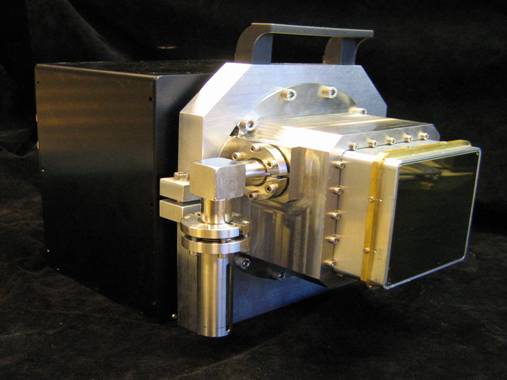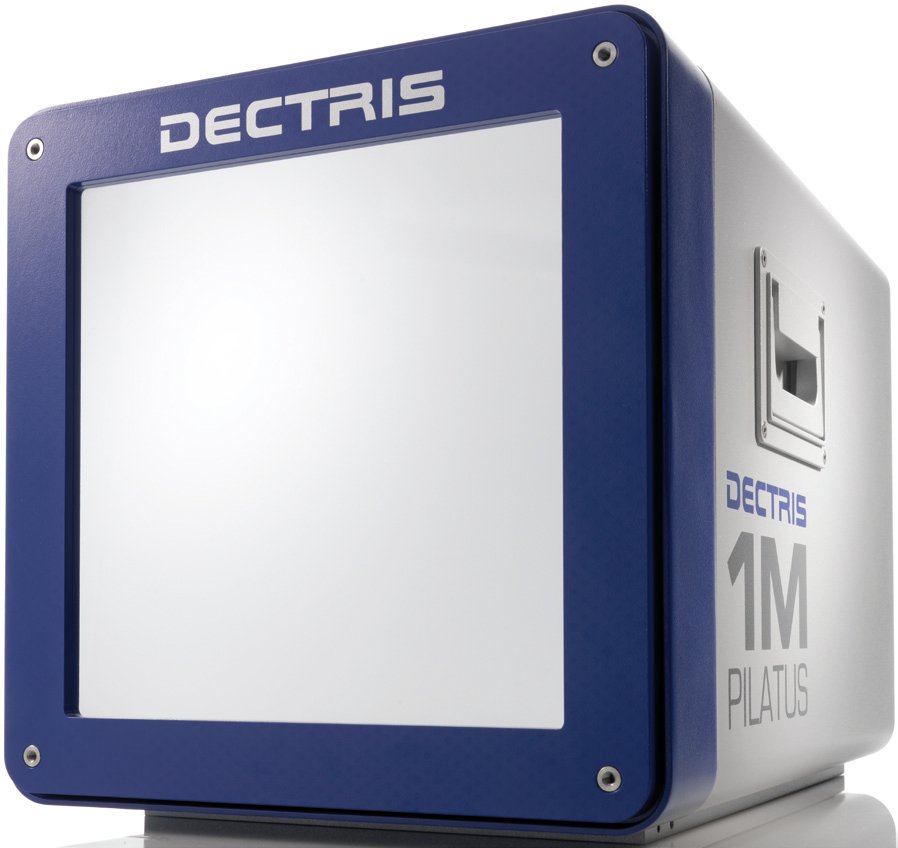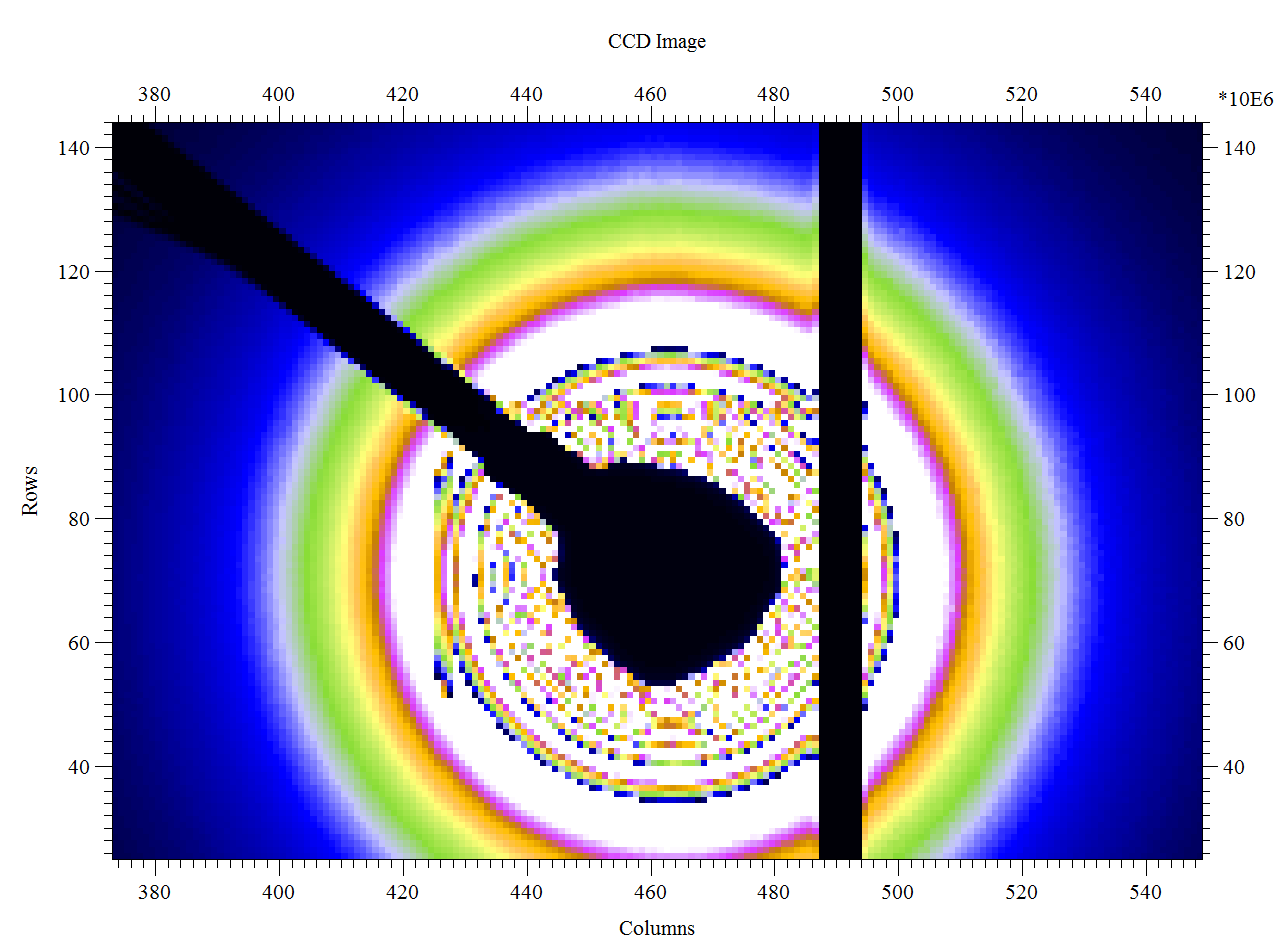Detectors
SAXS detectors
Currently one can use either a Pilatus 1M detector or a FReLoN 2k CCD camera for SAXS measurements. If needed (in the event of a malfunction of these two devices) the Multiwire Proportional Counters are still available.
- The Pilatus 1M detector is described in C. Broennimann et al., Journal of Synchrotron Radiation 13 (2006), 120-130.
- A basic presentation of the FReLoN camera is given here; technical data sheet is available here.
- An abstract about the position sensitive detector technology, data reduction, and count rates can be downloaded here (as pdf).
Pilatus 1M detector
Pilatus (by Dectris) is a state-of-the-art detector family with remarkable characteristics. The Pilatus 1M has been installed on the beamline and is operational from January 2011.
General characteristics
- fast, ultra low noise, very high dynamic range
- operates in single-photon counting mode
- based on CMOS hybrid-pixel technology
- high frame rate
- operates at room temperature
Technical specifications of the two Pilatus detectors
To quote from the Dectris website, due to the direct conversion of X-rays into charge pulses, PILATUS3 detectors spread virtually no intensity between pixels. The point-spread function of the PILATUS detector is significantly smaller than the pixel size (172 µm x 172 µm) and enables sharp images to be created which are free of artifacts (such as blur, intensity tails, blooming, or streaking). However users must beware saturating the detector. It is tempting to open up the slits and extend frame times to achieve good counting statistics in the higher q part of the spectrum. Pilatus detectors count 20 bits per pixel, i.e. a maximum of just over a million counts in any pixel (per frame). If the 20 bit limit is exceeded the pixel starts counting again from zero. This leads to artefacts of the kind illustrated below
|
|
It is therefore important to collect multiple short frames, rather than a single longer frame, if there is any possibility of reaching a million counts in a pixel. |
FReLoN 2k camera
The FReLoN 2000 (the acronym stands for Fast-Readout, Low-Noise) is a CCD camera developed by the ESRF Instrument Support Group.

More information is available here.
WAXS detectors
WAXS data can currently be acquired using a Pilatus 300K-W detector from Dectris (see details below) or a CCD-based X-ray digital camera: either the FReLoN 2000 (2048×2048 pixels), or a VHR (2657×3955 pixels) from Photonic Science.
The Pilatus 300K-W was the very first Pilatus detector at the ESRF. It arrived at DUBBLE in mid April 2009.
Technical specifications of the two Pilatus detectors on BM26B
For those who might miss the old MSGC (MicroStrip Gas Chamber) detector, some information about it is still available here.





